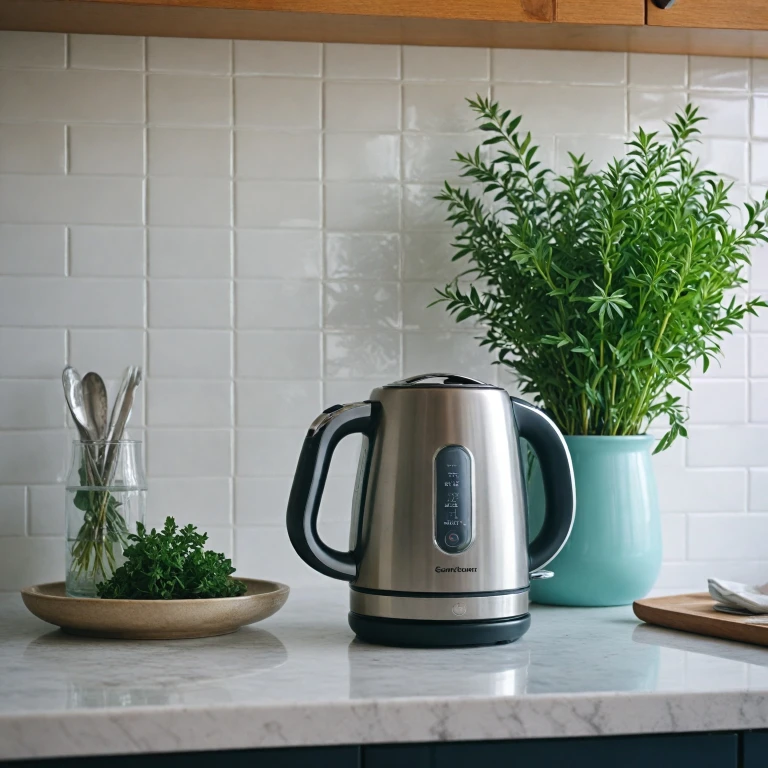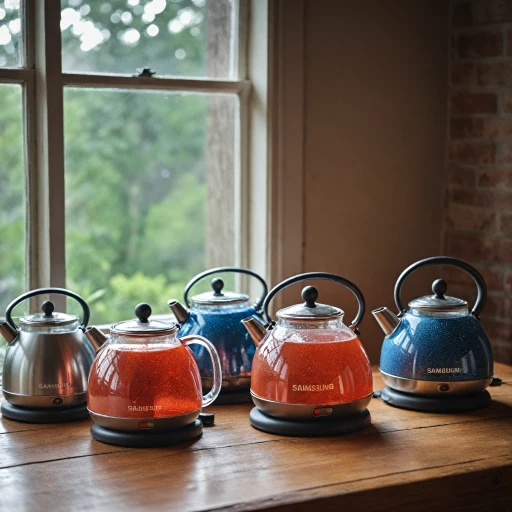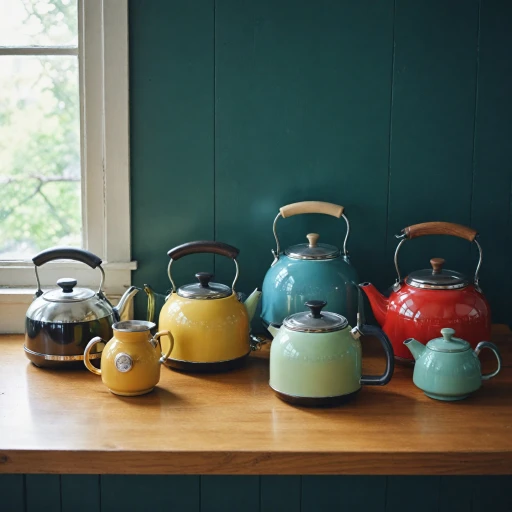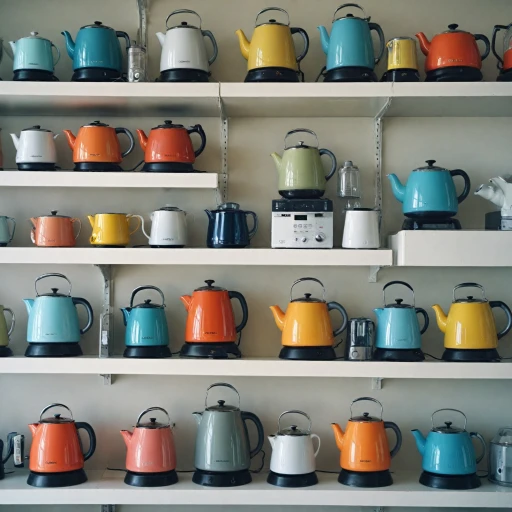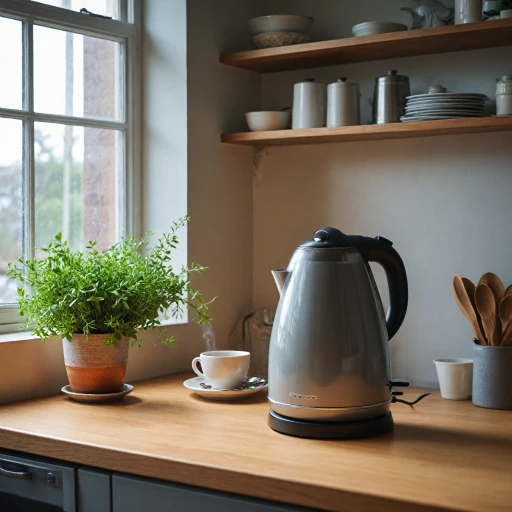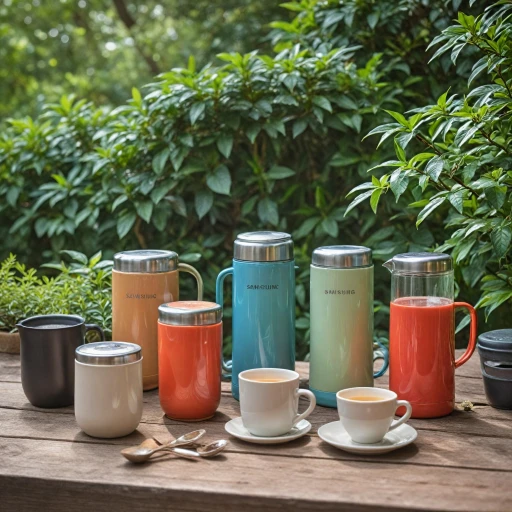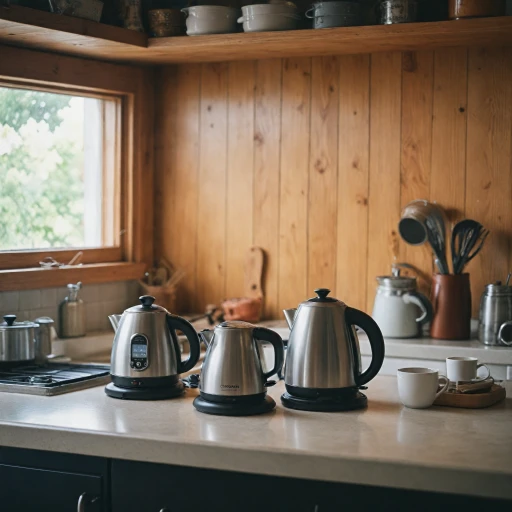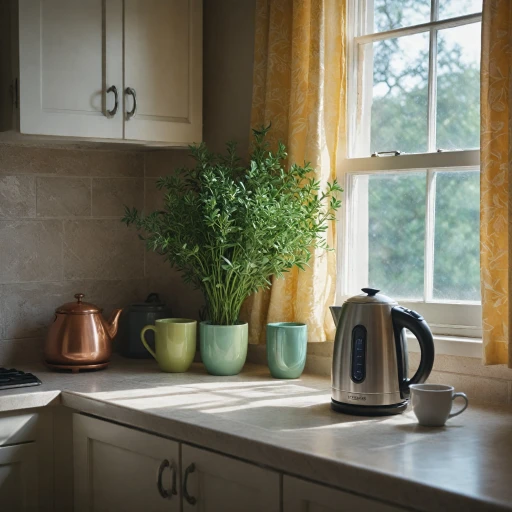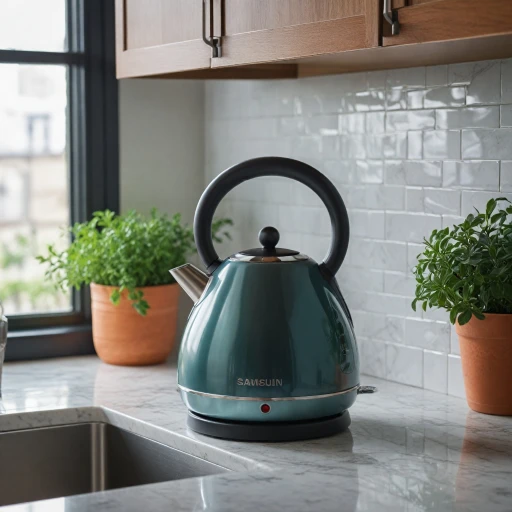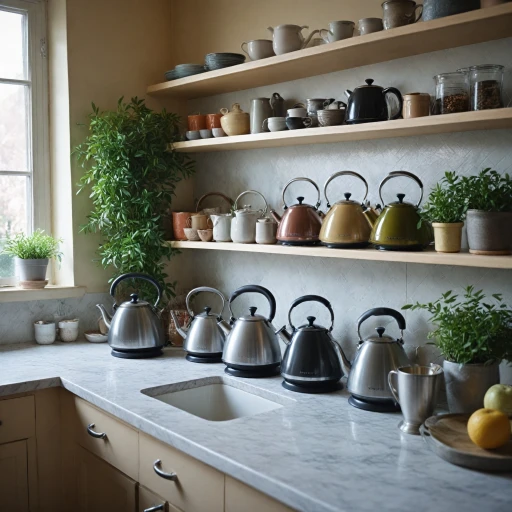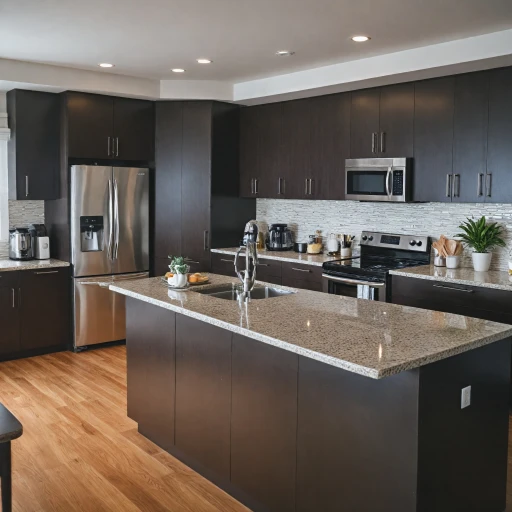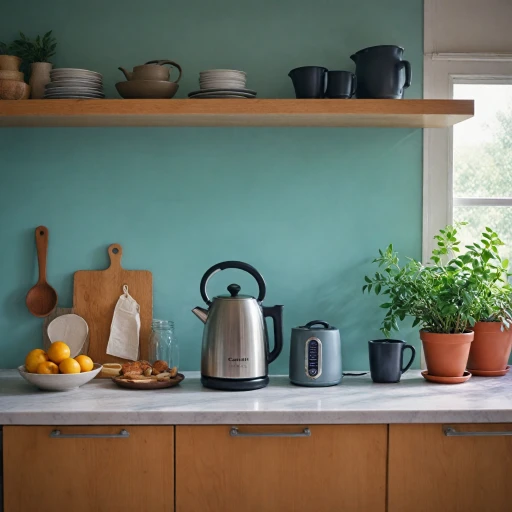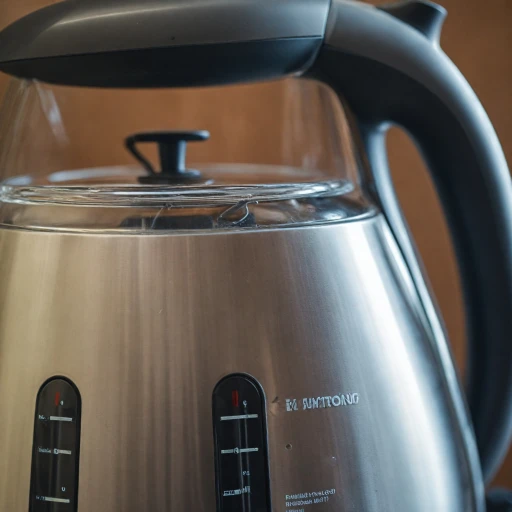
What is Electric Kettle Wattage?
Decoding Electric Kettle Wattage
When it comes to electric kettles, understanding wattage is crucial. Wattage essentially refers to the power consumption of the kettle, measured in watts. This figure indicates how much electricity the kettle uses to heat water. The higher the wattage, the more powerful the kettle is, which can significantly impact the speed at which it boils water.
For instance, a kettle with a higher wattage will generally boil water faster than one with a lower wattage. This is particularly useful for those who need to quickly prepare their morning coffee or tea. However, it's important to balance speed with energy consumption, as higher wattage kettles may lead to increased electricity usage.
Electric kettles come in various wattages, typically ranging from 1,000 to 3,000 watts. Popular models like the Hamilton Beach and gooseneck kettles offer different wattage options to suit various needs. Whether you're boiling a liter of water or using a variable temperature control feature, understanding the wattage can help you make an informed decision.
For more insights on how wattage affects the efficiency of electric kettles, you can explore understanding the efficiency variations in electric kettles.
How Wattage Affects Boiling Speed
The Speed of Boiling and Power Influence
The wattage of an electric kettle plays a crucial role in determining how quickly it can boil water. Generally, the higher the wattage, the faster the boiling speed. For instance, a kettle with a wattage of 1500 watts will typically boil a liter of water more quickly than one rated at 1000 watts. This could be particularly advantageous if you frequently need to heat water for morning coffee or tea and want to minimize your waiting time. Electric kettles equipped with higher wattage are efficient in rapidly achieving the desired temperature, whether you're preparing a quick cup of tea or filling a larger liter kettle. This quick boiling capability thanks to the power provided by higher wattage kettles can make a noticeable difference in your daily routine, especially if you’re in a hurry. However, speed isn't the only factor to consider when assessing kettles. While a powerful 1800-watt kettle will lace your water with unmatched speed, the energy consumption aspect is essential to keep in mind as it relates to your utility costs. It's important to balance the need for speed with other considerations such as energy efficiency, which we will discuss next, to determine the best choice for frequent or occasional hot water needs. Moreover, variable temperature and gooseneck kettle models provide enhanced control over boiling preferences, which might be beneficial for those keen on precision, such as coffee enthusiasts. These options also usually come with additional features like keep-warm settings that maintain the water at a desired temperature, offering added convenience beyond just boiling speed.Energy Consumption and Cost Implications
Balancing Energy Usage with Efficiency
When considering the energy consumption and cost implications of an electric kettle, it's essential to think about the kettle's wattage. Higher wattage kettles typically boil water faster, which means less time keeping it on, potentially reducing overall energy use. However, since they apply more power, their immediate electricity consumption is higher. This is where understanding energy efficiency comes into play. Efficient kettles not only heat water quicker but also minimize energy waste. Assessing the efficiency of your electric kettle may help balance energy use with speed and performance, especially if you're planning to frequently boil water for tasks like making coffee or tea. Kettle designs, from gooseneck kettles for precision pouring to variable temperature models for different brew temperatures, impact energy usage. Steel liter kettles with features like keep warm and dry protection aim to maintain temperature without excessive energy waste. For budget-conscious consumers, it’s worthwhile to assess wattage against electricity costs in their area since using high wattage and powerful kettles frequently might reflect noticeably on their electricity bill. Opting for a well-regarded kettle model, such as the efficient Hamilton Beach stainless steel electric kettles, could afford you both practical brew speeds and lower energy bills. Hence, when purchasing an electric kettle, factor in how the combination of wattage and efficiency could influence your energy consumption and financial considerations in the long run.Choosing the Right Wattage for Your Needs
Assessing Your Power Needs Before Buying
When choosing an electric kettle, one crucial factor to consider is the wattage. It's essential to match the kettle's power output with your personal needs to ensure efficient energy use and satisfactory performance. Here's how you can navigate this important decision:
Before adding a kettle to your cart, think about how you'll primarily use it. If you're an avid coffee or tea enthusiast, or if you frequently boil water for other uses, a higher wattage might be more suitable. Electric kettles with higher wattage, such as those around 1500 to 1800 watts, typically bring water to a boil faster, making them ideal for those who need hot water in a hurry.
On the other hand, if you use a kettle less frequently or are conscious of energy consumption, opting for a lower wattage model could be beneficial. Lower wattage kettles, while taking slightly longer to heat water, consume less electricity, which could lower your energy costs over time.
It's also worth considering additional features. Many newer kettle models offer variable temperature control, allowing you to set the precise wattage and temperature needed for specific beverages, from coffee to tea. This is particularly useful if you're interested in a gooseneck kettle or steel liter models, which often provide specific settings for different brewing needs.
Moreover, safety features, such as dry protection and auto shut-off, should not be overlooked. High wattage kettles, like those from brands such as Hamilton Beach, often include these to prevent accidents such as boiling dry.
Ultimately, the right kettle wattage will align with your unique combination of priorities—whether it's speed, energy efficiency, or safety. Always evaluate your needs before deciding.
Safety Considerations with High Wattage Kettles
Considerations for High Power Kettle Usage
When choosing an electric kettle, especially those with high wattage, safety should be a top priority. Higher wattage models bring the convenience of faster boiling; however, they may also present certain risks that need careful consideration. This section will provide you with important safety tips for operating high-power electric kettles.
- Boil Dry Protection: Modern electric kettles often come equipped with boil dry protection, a crucial safety feature that prevents the kettle from operating without water. This feature automatically shuts off the kettle when it detects an empty or near-empty state, safeguarding against potential damage and hazards.
- Variable Temperature Settings: Not all beverages require the water to be at boiling point. Investing in kettles with variable temperature settings can help avoid unnecessary high energy consumption and potential overheating. Variable temperature control is particularly beneficial if you're a coffee or tea enthusiast who needs precise heat management. Consider models like the gooseneck kettle for its precision pouring capabilities.
- Material Selection: Opt for electric kettles made from quality materials like stainless steel. These provide not only durability but also improve safety by minimizing exposure to harmful chemicals that could affect your water quality. Stainless steel liter kettles, like those from Hamilton Beach, are popular choices due to their longevity and safe boiling performance.
- Incorporating Energy Efficient Features: Some kettles, such as the Stagg EKG, feature keep warm functions that use minimal electricity to maintain the desired temperature without reboiling. While this increases convenience, always ensure the feature is used sensibly to avoid wasting energy.
- Proper Usage and Location: Place the kettle on a stable and heat-resistant surface to prevent accidents. Ensure it's away from flammable materials and that cords are kept clear from water sources. Always pour boiling water with caution to prevent scalding and burns.
By considering these safety aspects alongside power requirements, you can make an informed decision on selecting an electric kettle that best suits your needs and ensures a safe boiling environment in your kitchen.
Comparing Popular Electric Kettle Models by Wattage
Popular Models and Their Wattage
When selecting an electric kettle, wattage is a significant factor in determining how quickly your water will reach the desired temperature. High wattage models are known for their rapid boiling, but they also consume more electricity, impacting energy consumption and cost. Let's examine some popular electric kettles and their wattage ratings to help you make an informed choice.- Hamilton Beach 1.7 Liter Kettle: Known for its efficient energy use, this model has a wattage rating of 1500 watts. Its stainless steel finish provides durability and its design often includes features like dry protection and auto shut-off to enhance safety.
- Stagg EKG Electric Pour-Over Kettle: Perfect for coffee enthusiasts, this gooseneck kettle with variable temperature control is rated at 1200 watts. It offers precision in boiling water, making it ideal for specialty drinks like pour-over coffee or fine teas.
- AmazonBasics Stainless Steel Electric Kettle: Operating at 1500 watts, this budget-friendly option can boil water swiftly while consuming electricity efficiently. It includes basic safety features like automatic shut-off and boil-dry protection.
- Cuisinart CPK-17 PerfecTemp Electric Kettle: With a wattage of 1500, this model excels in offering multiple temperature settings for diverse brewing needs. Its keep warm function and stainless steel exterior combine convenience and quality.
